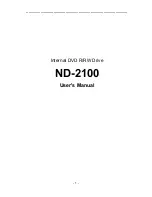
6-210
D differential time (PID control 1: J112 / PID control 2: J212)
J05 specifies the differential time for the PID processor.
- Data setting range: 0.00 to 600.00 (s)
0.00 means that the differential component is ineffective.
D (Differential) action
An operation in which the MV (manipulated value: output frequency) is proportional to the
differential value of the deviation is called D action, which outputs the MV that differentiates
the deviation. D action makes the inverter quickly react to a rapid change of deviation.
The effectiveness of D action is expressed by differential time as parameter, that is J05 data.
Setting a long differential time will quickly suppress oscillation caused by P action when a
deviation occurs. Too long differential time makes the inverter output oscillation more.
Setting short differential time weakens the suppression effect when the deviation occurs.
The combined uses of P, I, and D actions are described below.
(1) PI control
PI control, which is a combination of P and I actions, is generally used to minimize the
remaining deviation caused by P action. PI control always acts to minimize the deviation
even if a commanded value changes or external disturbance steadily occurs. However, the
longer the integral time, the slower the system response to quick-changed control.
P action can be used alone for loads with very large part of integral components.
(2) PD control
Under PD control, the moment that a deviation occurs, the control rapidly generates greater
MV (manipulated value) than that generated by D action alone, to suppress the deviation
increase. When the deviation becomes small, the behavior of P action becomes small.
A load including the integral component in the controlled system may oscillate due to the
action of the integral component if P action alone is applied. In such a case, use PD control to
reduce the oscillation caused by P action, for keeping the system stable. That is, PD control is
applied to a system that does not contain any damping actions in its process.
(3) PID control
PID control is implemented by combining P action with the deviation suppression of I action
and the oscillation suppression of D action. PID control features minimal control deviation,
high precision and high stability.
In particular, PID control is effective to a system that has a long response time to the
occurrence of deviation.
Summary of Contents for FRENIC-AQUA series
Page 1: ...MEHT538b...
Page 2: ...User s Manual...
Page 13: ......
Page 15: ......
Page 33: ......
Page 35: ......
Page 61: ...2 26 Figure D Figure E NC No connection Do not make wiring NC NC...
Page 63: ...2 28 Figure J Figure K Charging lamp Charging lamp Viewed from A...
Page 83: ...2 48 Unit mm FRN45 to 55AQ1 4...
Page 84: ...2 9 External Dimensions 2 49 Chap 2 SPECIFICATIONS Unit mm FRN75 to 90AQ1 4...
Page 85: ...2 50 Unit mm FRN110AQ1S 4 FRN132AQ1S 4 FRN160AQ1S 4 FRN200AQ1S 4...
Page 87: ...2 52 Unit mm FRN500AQ1S 4 FRN630AQ1S 4 FRN710AQ1S 4...
Page 88: ...2 9 External Dimensions 2 53 Chap 2 SPECIFICATIONS 2 9 2 Keypad Unit mm Panel cutout...
Page 95: ......
Page 140: ...4 4 Options 4 33 Chap 4 SELECTING PERIPHERAL EQUIPMENT...
Page 279: ......
Page 281: ......
Page 341: ...6 60 Example of Thermal Overload Detection Characteristics...
Page 637: ......
Page 639: ......
Page 651: ...7 12 Figure 7 7 Terminal FM2 Output Selector...
Page 653: ......
Page 663: ......
Page 665: ......
Page 699: ......
Page 717: ......
Page 719: ......
Page 733: ......
Page 749: ......
Page 751: ...MEHT537 Phone 81 3 5435 7058 Fax 81 3 5435 7420 Printed in Japan 2012 08 H12b b12 CM00FOLS...
















































